Sunlight is essential for growing plants, whether outside or indoors because the light is necessary for photosynthesis—the process that converts light, oxygen, and water into energy. Plants cannot grow or bloom without this energy. Therefore, lack of adequate light will result in severely stunted plant growth or even plants dying. On the other hand, there is such a thing as plants getting too much sunlight. Exposure to too much sunlight can scorch, bleach, and damage plants, eventually killing them altogether. However, some plants thrive in full sunlight.
The Southern sun is no match for these bright beauties. Southern states are known for intense summer temperatures, and weather forecasts can be challenging for gardeners. When cultivating flowers, we look for species that can stand up to the often blistering sun of Southern climates. Here, we’ve rounded up flowers that thrive in full sun. They look good in the summer, spring, or fall, as long as the sun shines. Plant them as a part of a container, or put them in a beautiful flowerbed to add some color and personality to the garden. No matter how you plant them, the blooms will be magnificent in the sunshine.
Angelonia
- Botanical Name: Angelonia angustifolia
- Sun Exposure: Full
- Soil Type: Well-draining, Rich
- Soil pH: Slightly Acidic (5.5-6.2)
This beauty is also known as the summer snapdragon. Not only does it love the sun, but it also only needs to be watered about once a week. It’s an excellent choice for hot, sunny spots and can thrive in a container.
Black-Eyed Susan
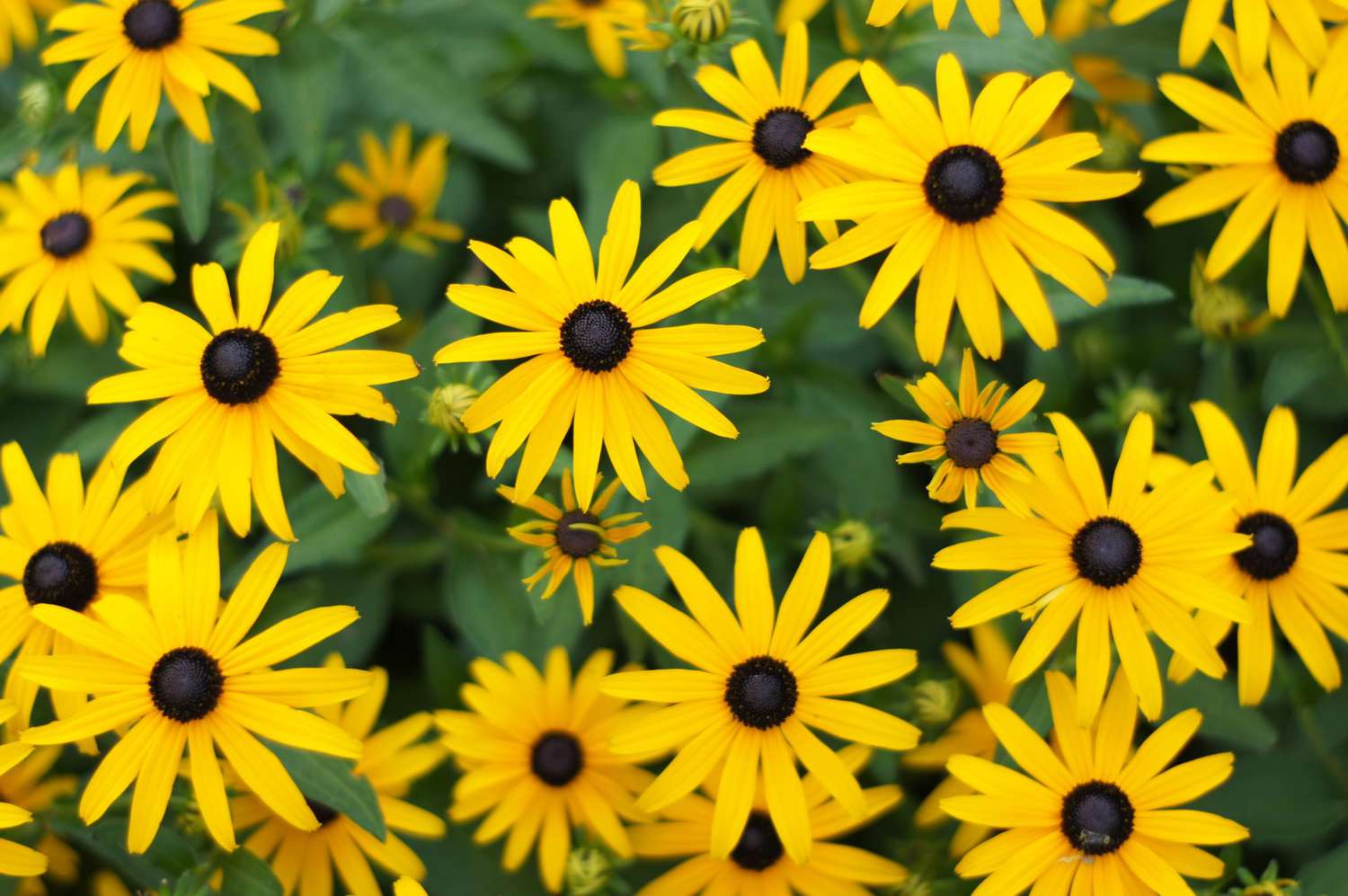
- Botanical Name: Rudbeckia hirta
- Sun Exposure: Full
- Soil Type: Well-drained, Loamy, Clay, Sandy
- Soil pH: Acidic (6.8)
The Black-eyed Susan is one of the easiest flowers to grow in full sunlight. Often found in open woods, prairies, fields, or along roadsides, this wildflower spreads quickly. These flowers appear in late summer and early autumn and resemble the structure of daisies or coneflowers—typically yellow petals surrounding a brownish-black center.
Calibrachoa
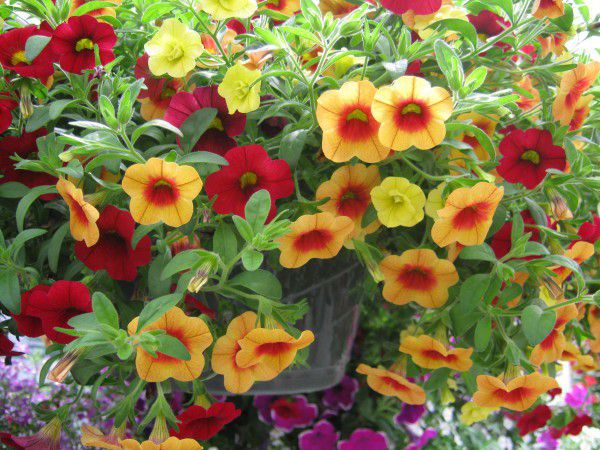
- Botanical Name: Calibrachoa
- Sun Exposure: Full
- Soil Type: Well-draining, Rich
- Soil pH: Slightly Acidic (5.5-6.2)
Calibrachoa—also known as «million bells» due to its proliferation of beautiful blooms—thrives in full sun but can tolerate partial shade and even a bit of drought. This species, related to the petunia, is available in various colors, including bi-colors and veined patterns. This flower is also known as the mini petunia and trailing petunia.
Chrysanthemum
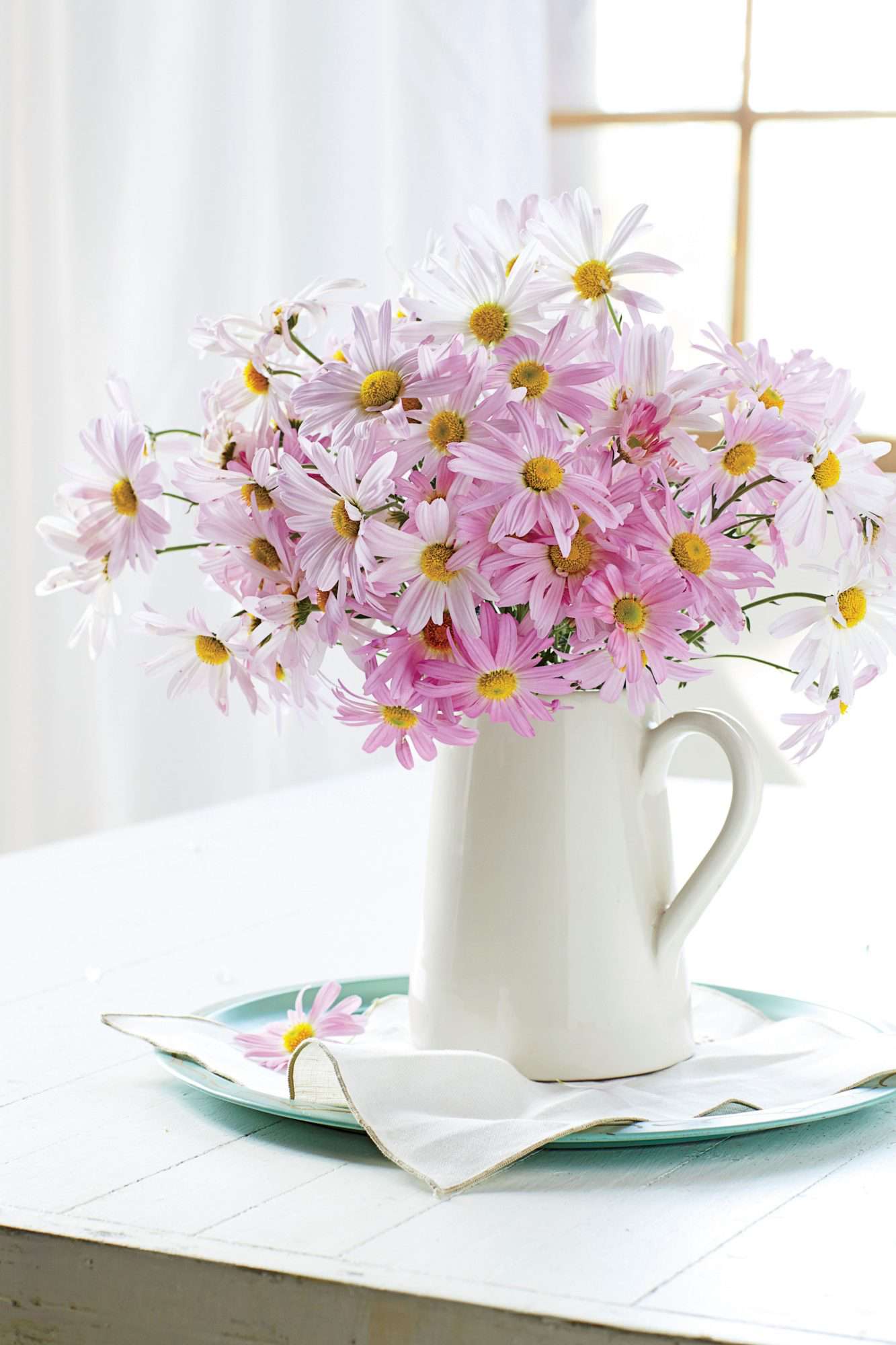
- Botanical Name: Chrysanthemum morifolium
- Sun Exposure: Full
- Soil Type: Well-drained, Moist
- Soil pH: SlightlyAcidic to Neutral (5.8-7.0)
Heirloom mums grow in clumps and can be a pass-along plant easy to share and grow in a pot. It’s best to share these flowers in the late fall or the spring. Growing between two and three feet, some mums look like daisies and bloom in white, yellow, red, pink, orange, and more varieties. Deer do not like mums, so they are safe to plant and enjoy all season.
Coneflower
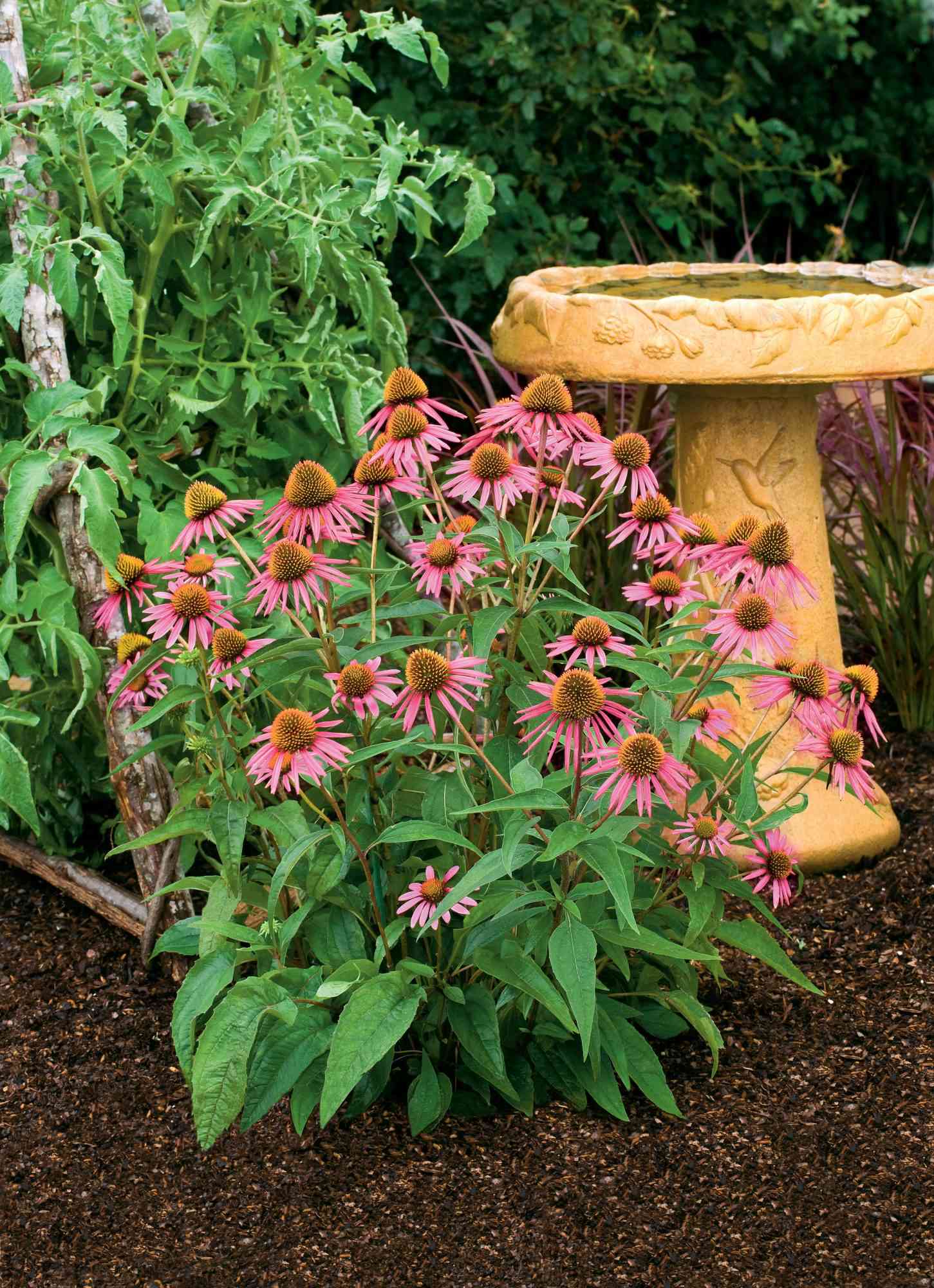
- Botanical Name: Echinacea
- Sun Exposure: Full
- Soil Type: Well-drained, Rich
- Soil pH: Acidic to Neutral (6.5-7.2)
These Southern native flowers thrive in heat and humidity. They bloom best in full sun but can tolerate a little afternoon shade. Coneflowers can be drought-tolerant but should be watered regularly in their first season. The wildflowers attract birds, bees, and butterflies and make excellent cut flowers.
Cosmos
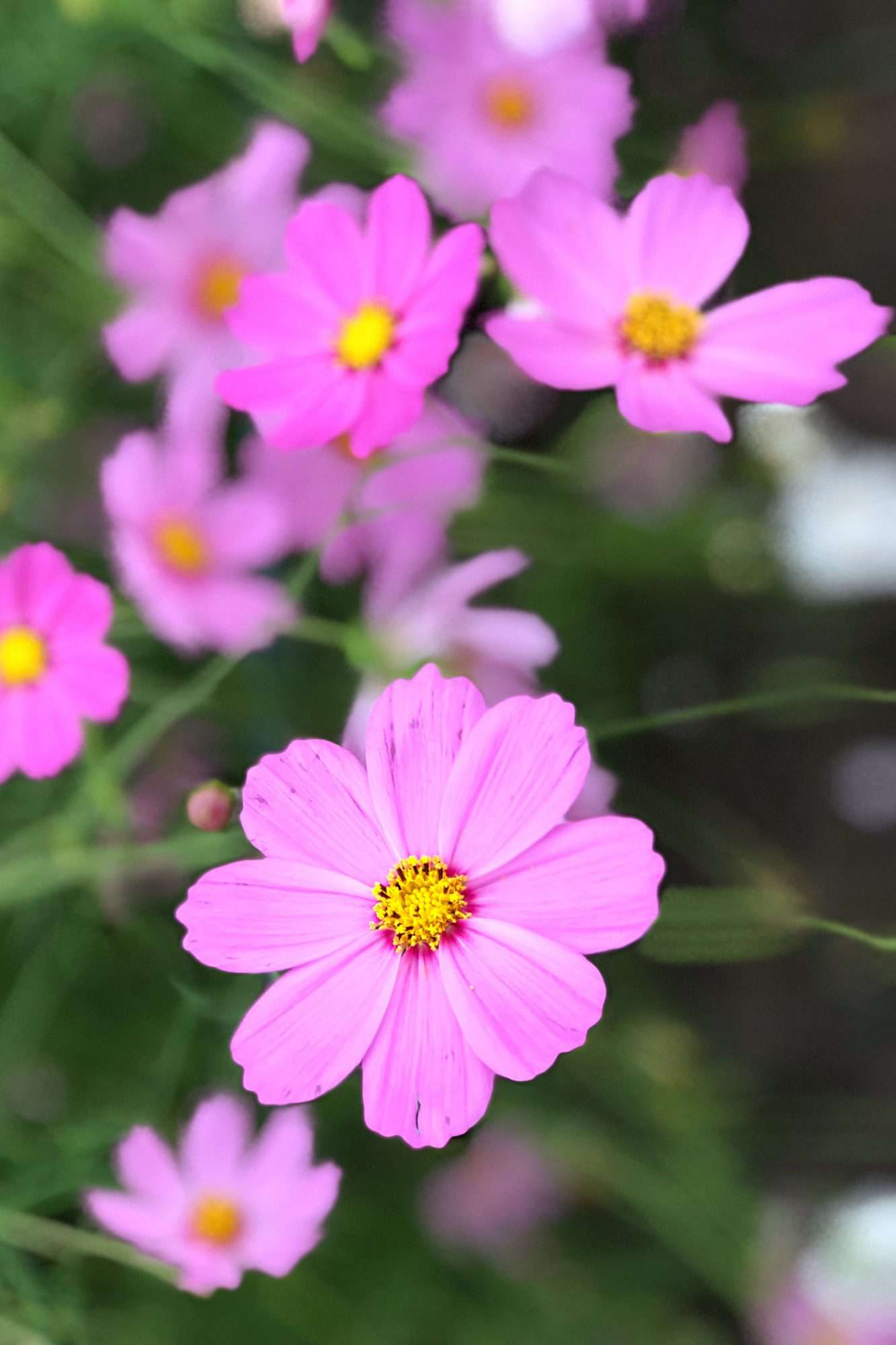
- Botanical Name: Cosmos bipinnatus
- Sun Exposure: Full
- Soil Type: Well-draining, Dry, Arid
- Soil pH: Acidic (6.0-6.8)
These beautiful, many-petaled flowers are easy to grow from seed and aren’t picky regarding soil and water. They can withstand bright sun but also tolerate shade in scorching areas. Cosmos are showy flowers that attract birds and butterflies.
Daylily

- Botanical Name: Hemerocallis
- Sun Exposure: Full
- Soil Type: Well-draining, Moist
- Soil pH: Slightly Acidic (6.3-6.8)
Daylilies are perennial flowers that thrive in the sun. The outstanding blooms are available in almost any color and are easy to maintain as they are generally pest and disease free. Although daylilies are relatively drought-tolerant, they can benefit from afternoon shade in particularly hot areas.
Delphinum
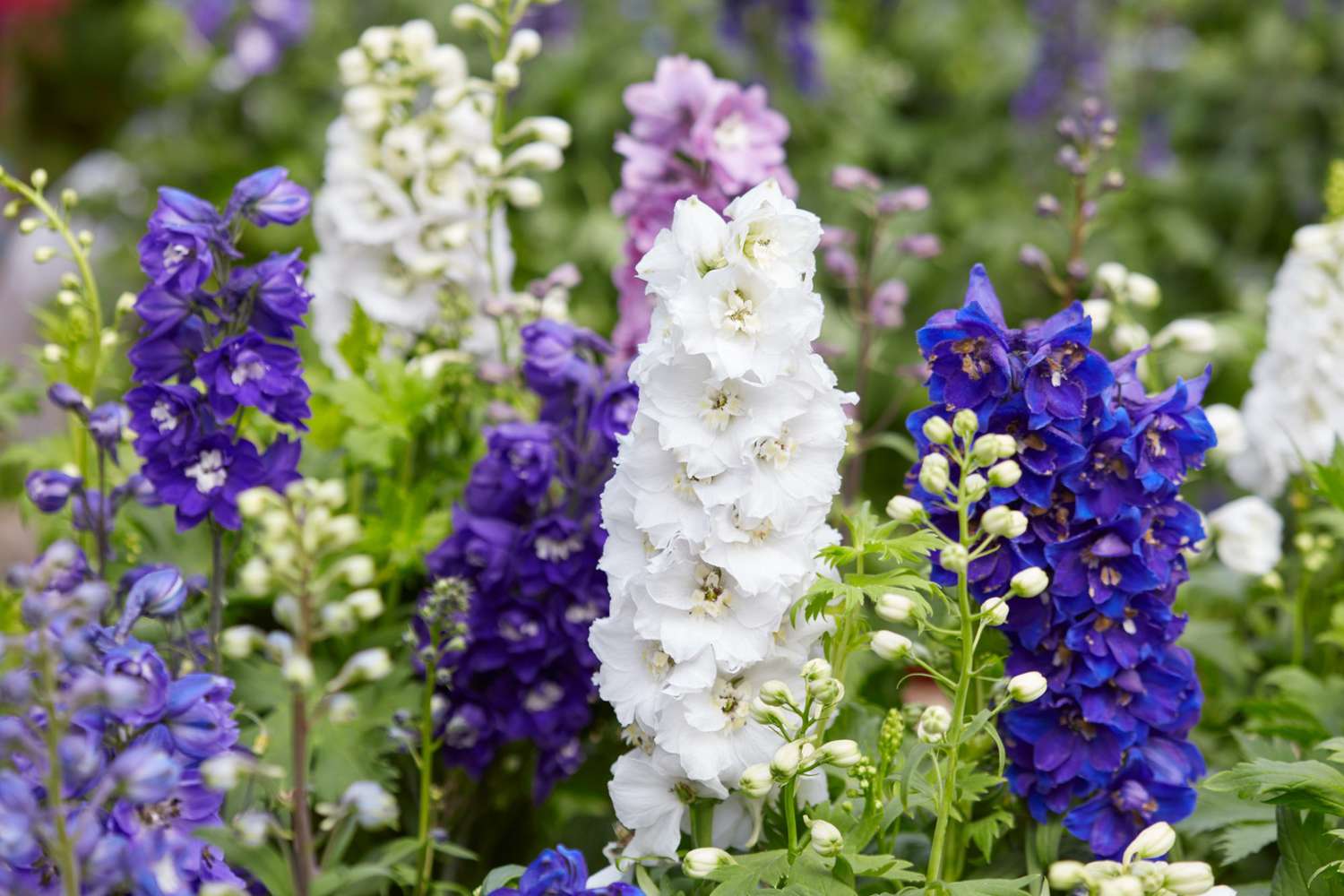
- Botanical Name: Delphinium elatum
- Sun Exposure: Full
- Soil Type: Well-draining, Moist, Rich
- Soil pH: Neutral to Slightly Alkaline (7.0)
These big, beautiful bloomers have colorful flowers on tall spikes and can withstand hot climates. They require up to eight hours of sun a day and will repeatedly bloom during the summer. This flower’s vibrant blue, pink, purple, and white shades help it stand out in the garden.
Euphorbia
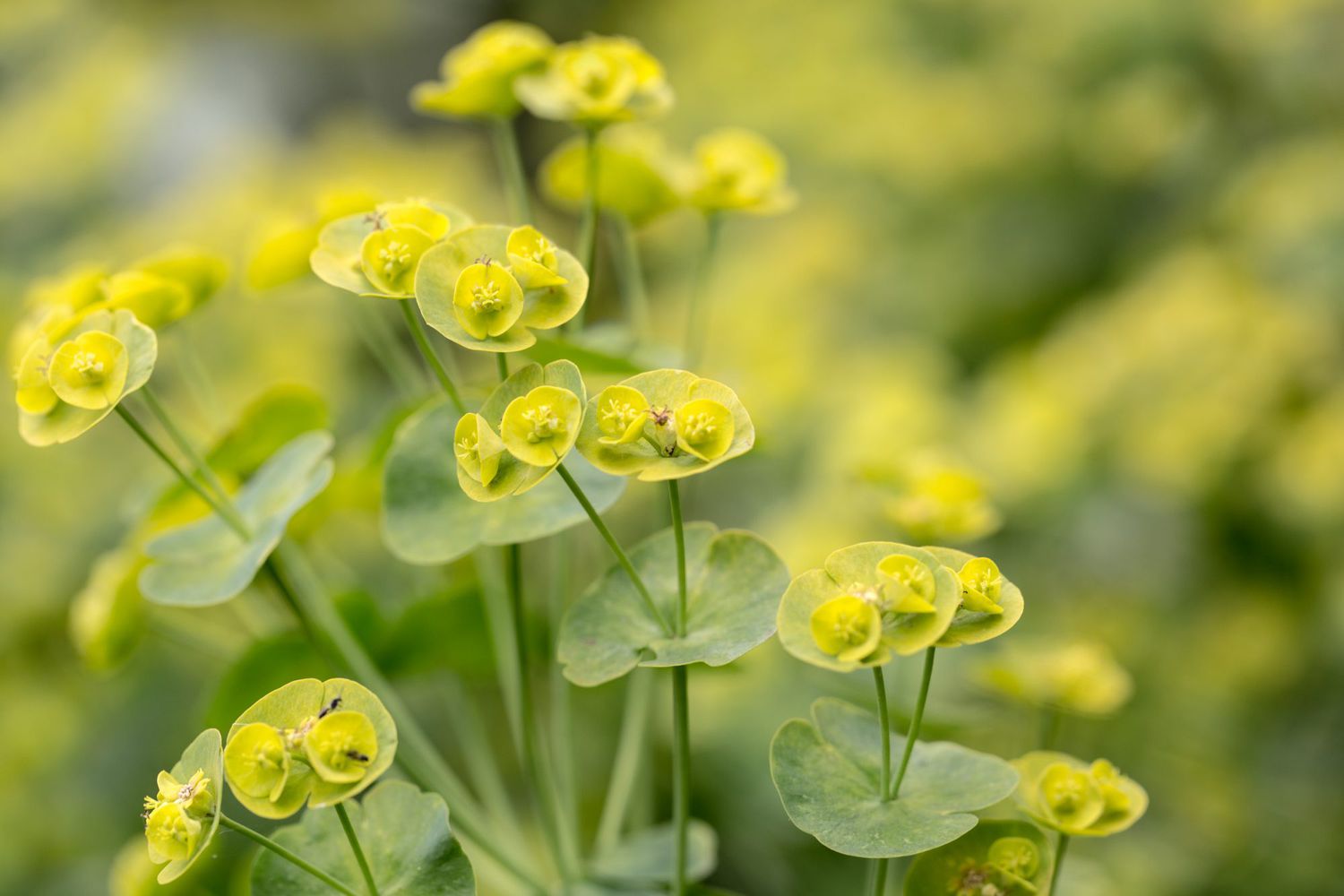
- Botanical Name: Euphorbia spp.
- Sun Exposure: Full
- Soil Type: Well-draining, Sandy
- Soil pH: Slightly Acidic to Neutral (5.0-7.0)
Most blooming euphorbias love the sun and need six or more hours of it to thrive. These hardy plants come in various forms, foliage, and flower shapes. The unique floral structure makes this species highly coveted for ornamental plant gardens.
Fan Flower
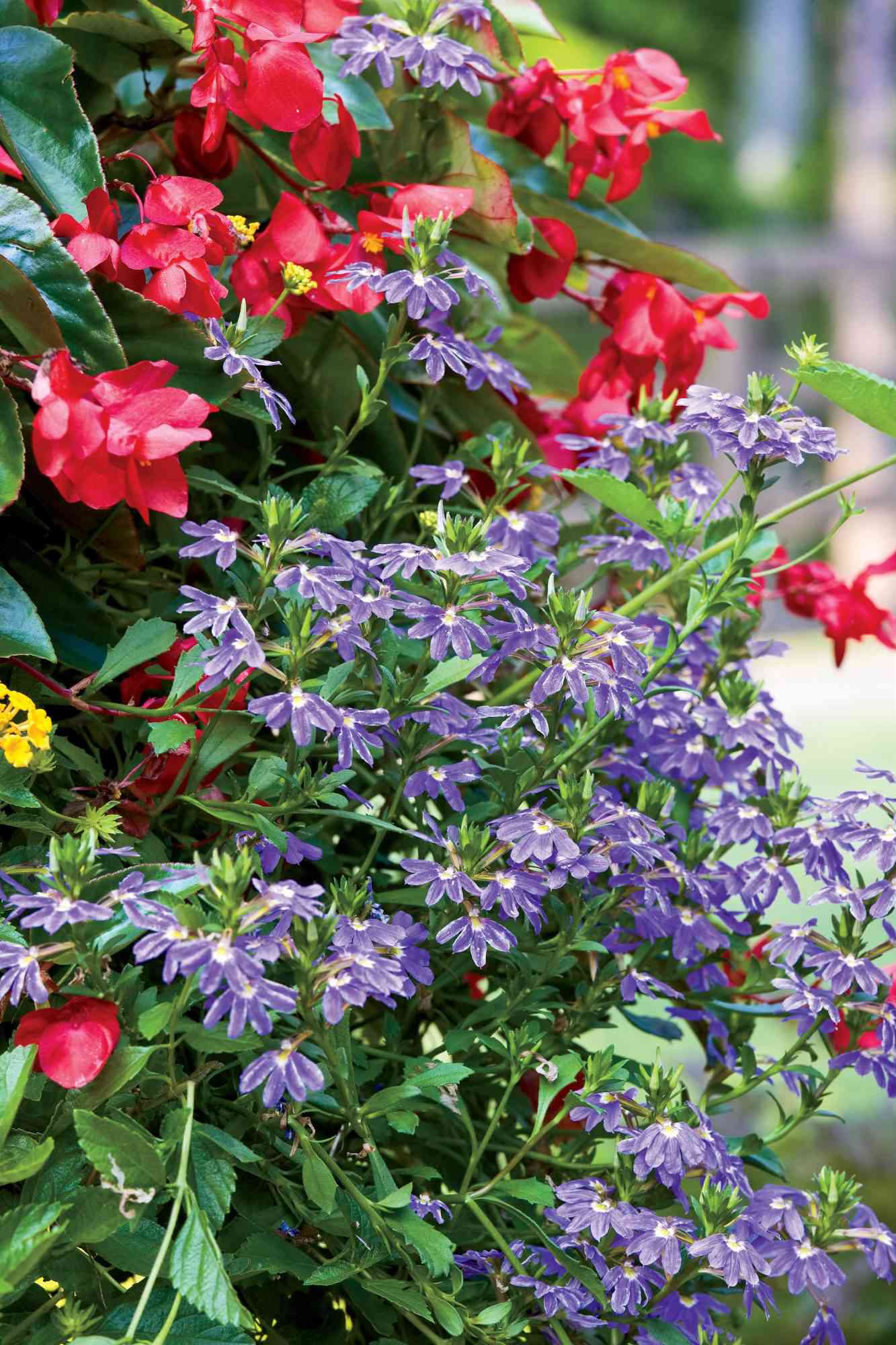
- Botanical Name: Scaevola taccada
- Sun Exposure: Full
- Soil Type: Well-draining, Moist
- Soil pH: Acidic (5.5-6.0)
Fan Flower, also known as Scaevola, is a summer annual that will need to be watered about three times a week and does best in containers. It blooms from late spring to the fall in various colors, including blue, purple, pink, and white. This sprawling plant grows fast without needing to prune or setbacks from pests or disease.
Foxglove
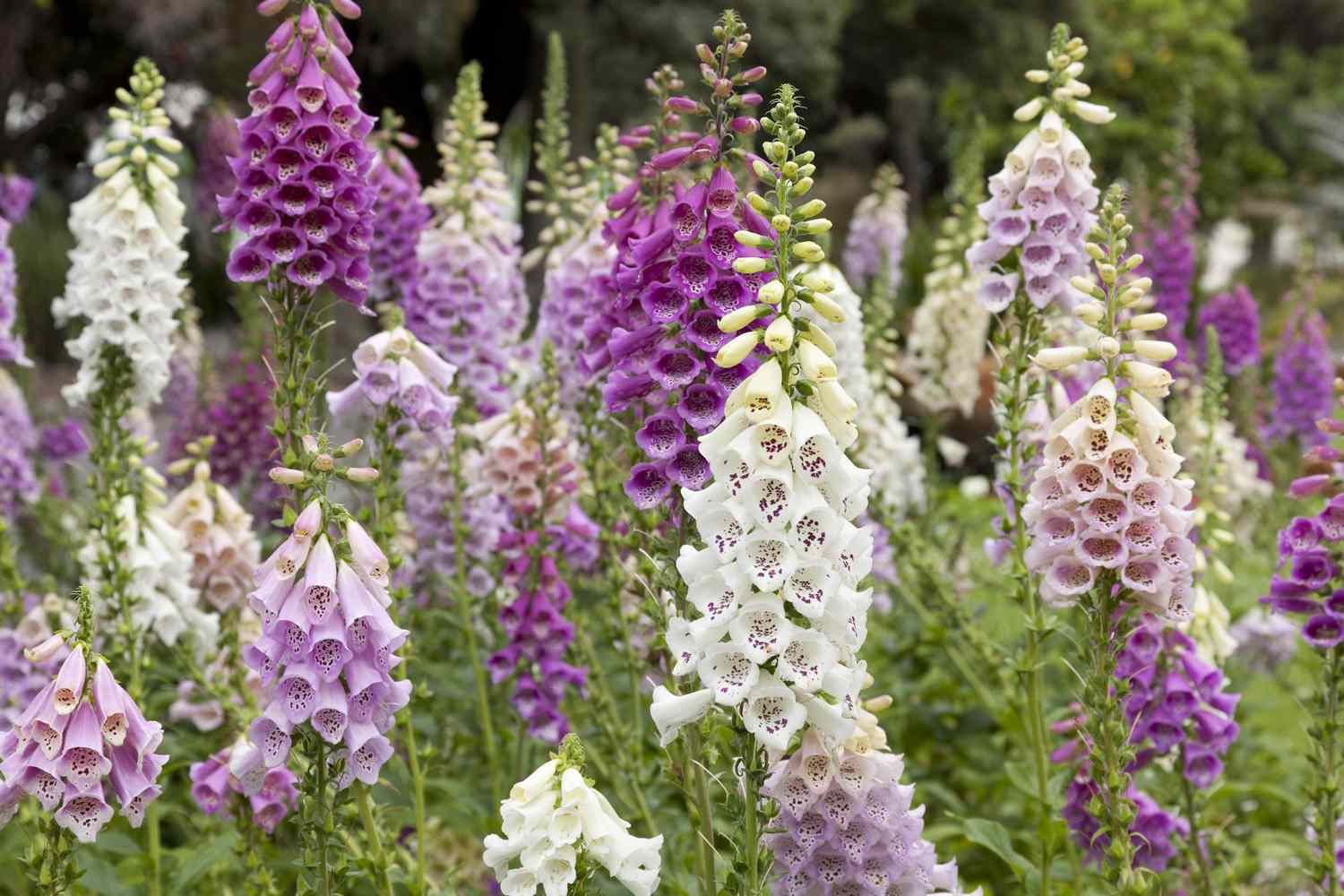
- Botanical Name: Digitalis
- Sun Exposure: Full
- Soil Type: Well-draining, Moist, Rich
- Soil pH: SlightlyAcidic (5.5-6.5)
Showy foxgloves thrive in full sun. Though, they are also known to grow well in shady environments. They take to moist soils amended with organic matter, but they’re tolerant of most soil types.
Geranium
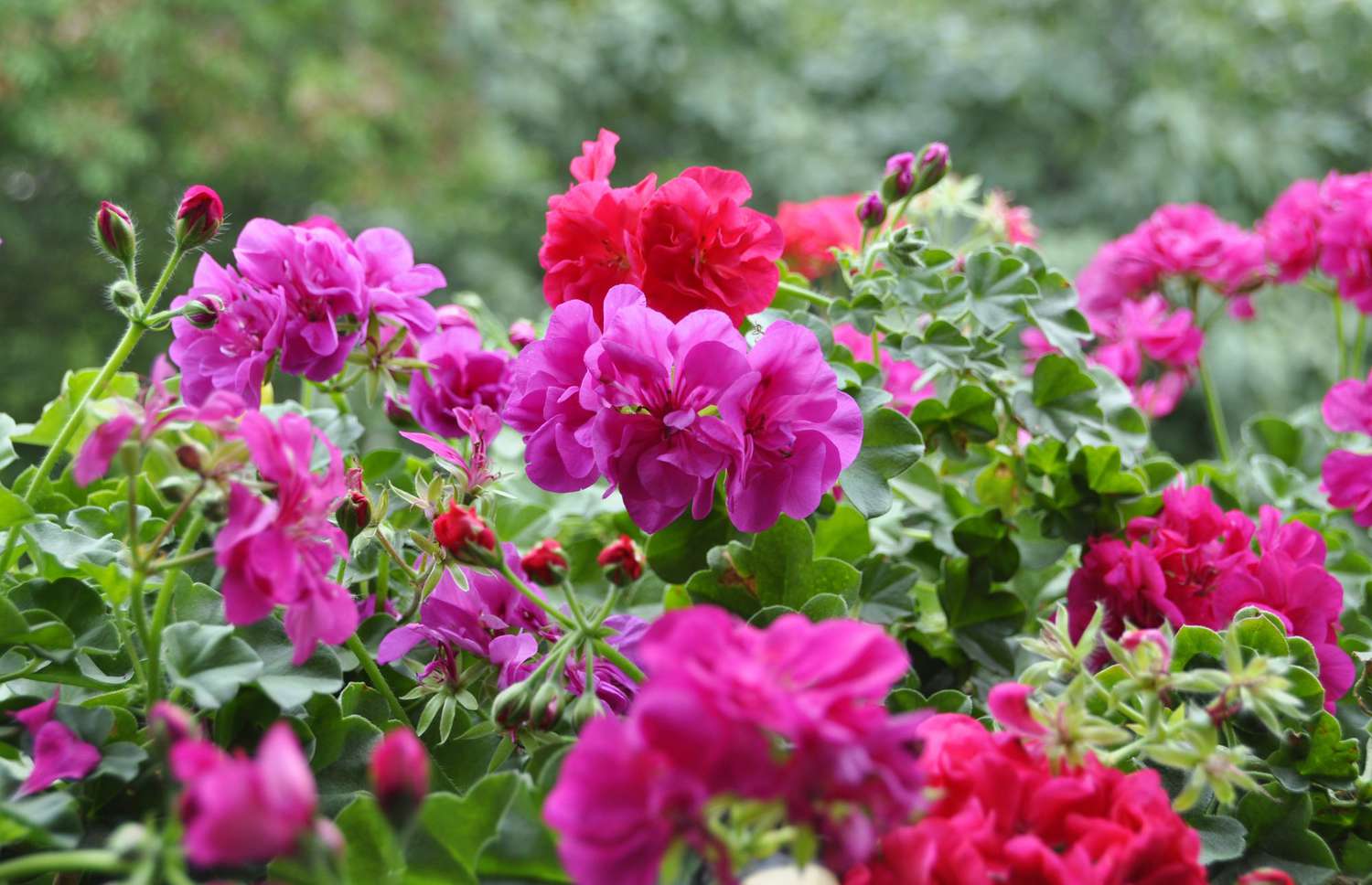
- Botanical Name: Pelargonium
- Sun Exposure: Full
- Soil Type: Well-draining, Loamy
- Soil pH: SlightlyAcidic (5.8-6.5)
These gorgeous, sun-loving plants need bright light to thrive. They will grow leggy instead of bushy in shadier environments and won’t bloom as profusely. Depending on the variety, this flower grows well in hanging baskets, borders, and window boxes. Flowers range in color from lilac to orange and even bi-color species.
Hibiscus
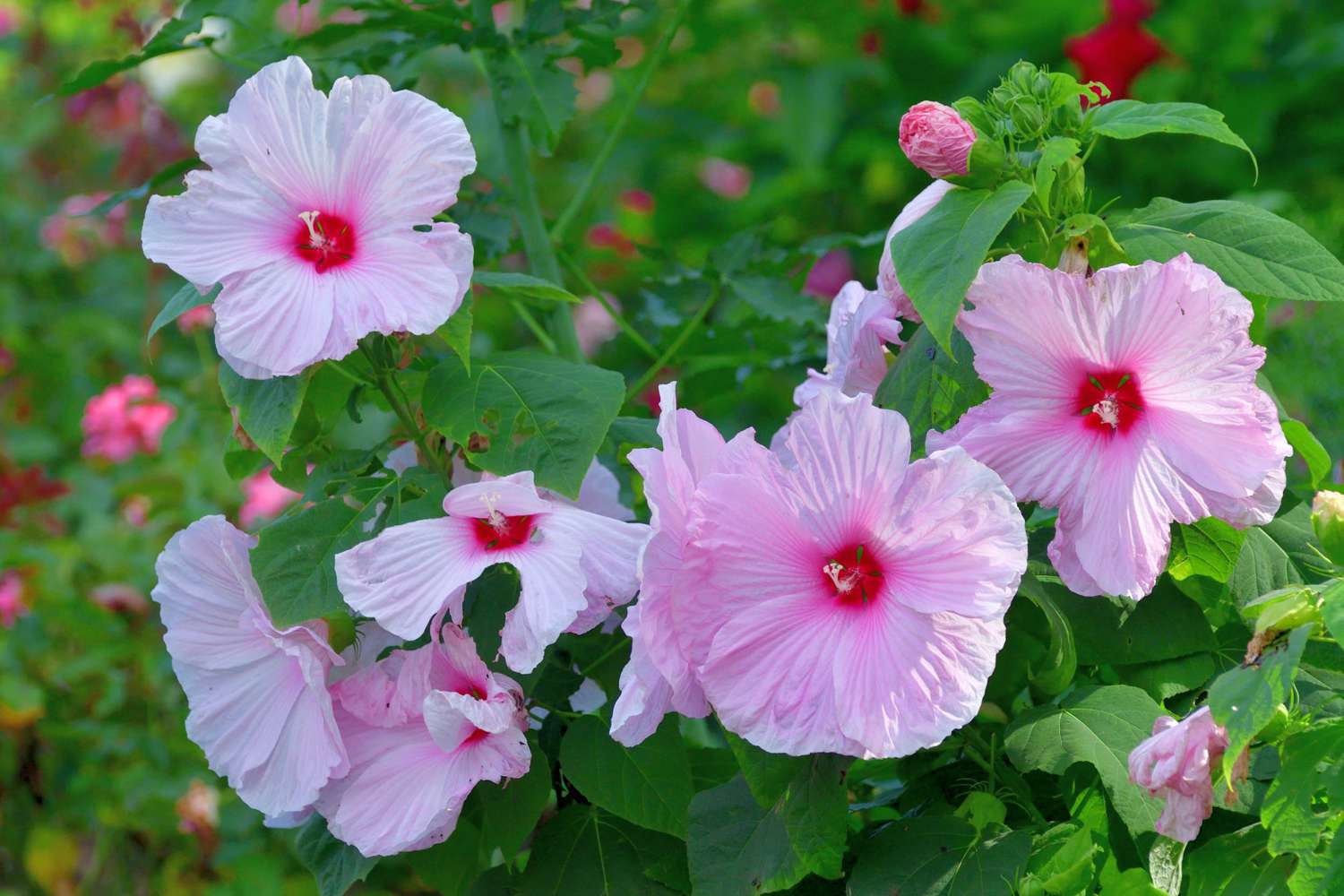
- Botanical Name: Hibiscus spp.
- Sun Exposure: Full
- Soil Type: Well-draining, Clay
- Soil pH: SlightlyAcidic (6.5-6.8)
Native to warm, subtropical, and tropical environments, hibiscus make perfect sun-loving flowers. Hibiscus grows well in containers as long as it has well-draining soil but also requires a lot of water in its early blooming stages. A slow-release fertilizer will help ensure this plant gets all the nutrients it needs.
Impatiens

- Botanical Name: Impatiens spp
- Sun Exposure: Full
- Soil Type: Well-draining, Moist, Rich
- Soil pH: SlightlyAcidic (6.0-6.5)
Not all impatiens thrive in full sun, but some do exceptionally well. Track down varieties that love sunny spots, and you’ll have plenty of flowers on your hands come summertime. Impatiens are also known as «touch-me-nots» because a gently touched ripe seed capsule will explode and send seeds sprinkling around the ground.
Lantana
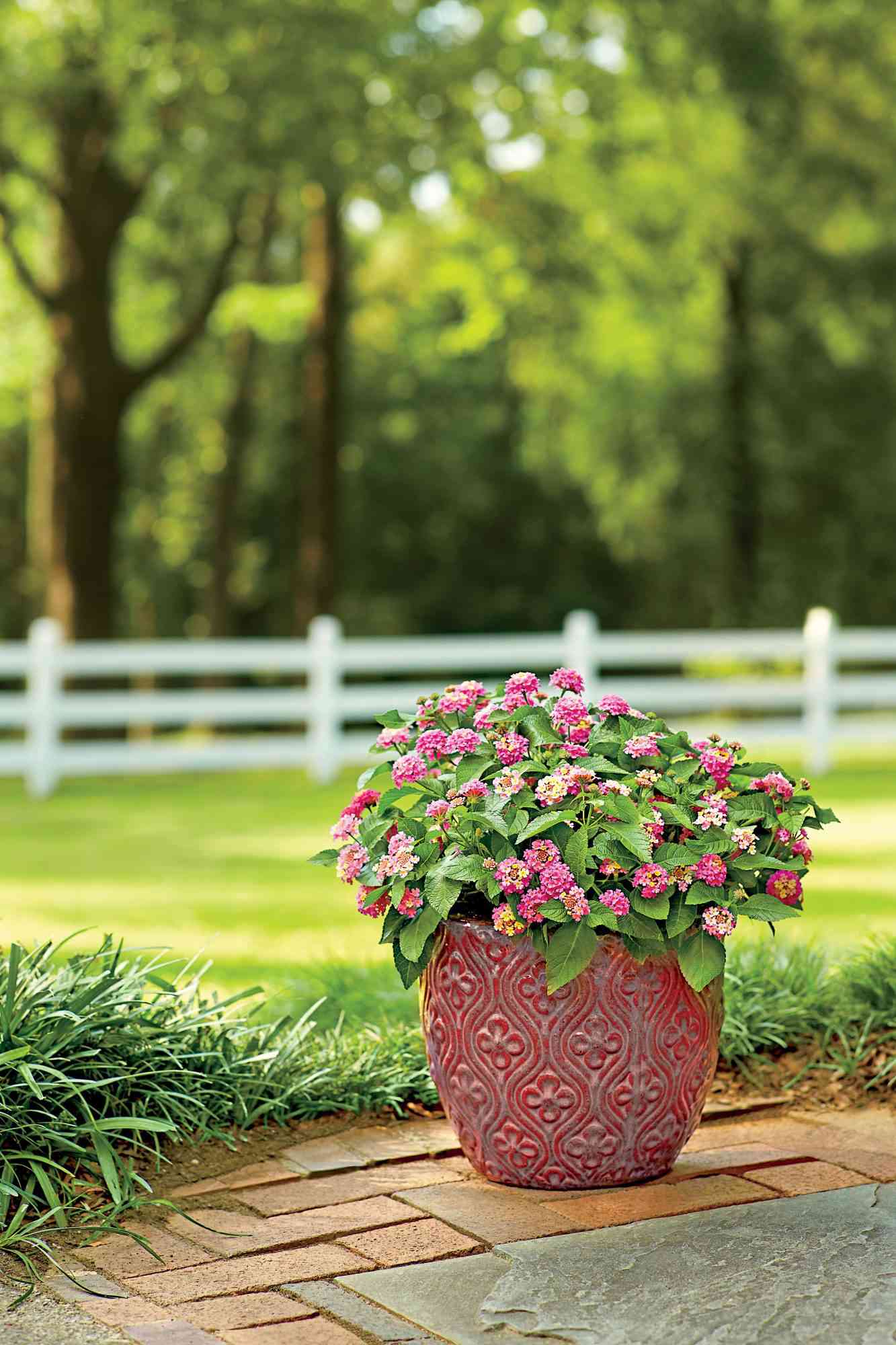
- Botanical Name: Lantana camara
- Sun Exposure: Full
- Soil Type: Well-draining, Clay, Sandy
- Soil pH: Acidic toSlightlyAcidic (5.5-6.5)
It’s never too hot or too dry for a lantana planting. Beautifully-potted lantana will give color all summer and fall. The heat-tolerant plant loves the full sun—you only need a few plants to put on a show. Lantana seedlings can be invasive, so plant selections that set little or no seed, such as «Gold Mound» and «Pinkie.»
Marigold
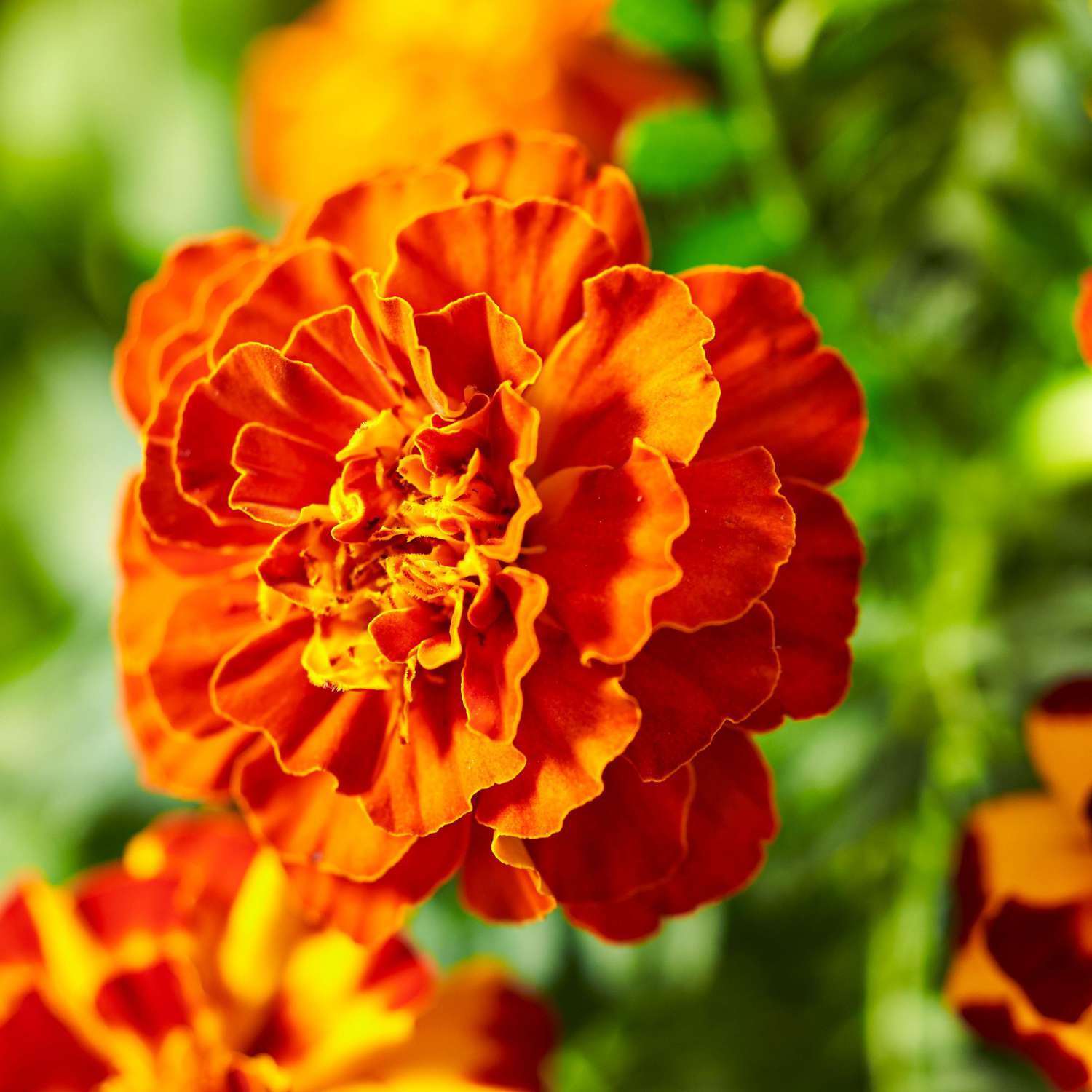
- Botanical Name: Tagetes
- Sun Exposure: Full
- Soil Type: Well-drained, Loamy
- Soil pH: Slightly Acidic to Neutral (6.0-7.0)
Marigolds are excellent border plants that can withstand a full day of sun. The fragrant smell deters rabbits and deer, so plant this flower on the edge of your garden or in window boxes. Marigolds are relatively drought-tolerant and bloom in various gold, orange, yellow, and white colors. Typically, these flowers are annuals, but some perennial species exist.
Pansy

- Botanical Name: Viola tricolor var. hortensis
- Sun Exposure: Full
- Soil Type: Well-draining
- Soil pH: Acidic (5.4-5.8)
Pansies are the easiest way for new and experienced gardeners to bring cheer to a fall garden. So long as they have full sun, pansies will thrive in flowerbeds or containers. Pansies, violas, and violets are all perennial flowers that belong to the same genus.
Peony

- Botanical Name: Paeonia
- Sun Exposure: Full
- Soil Type: Well-draining
- Soil pH: SlightlyAcidic to Neutral (6.5-7.0)
We know they make beautiful cut flowers, but they love the full sun in the garden. When cutting from the garden, do so in the early morning and choose buds that are just beginning to open. Peonies are known for their large, showy bloom and glossy green foliage.
Poppy
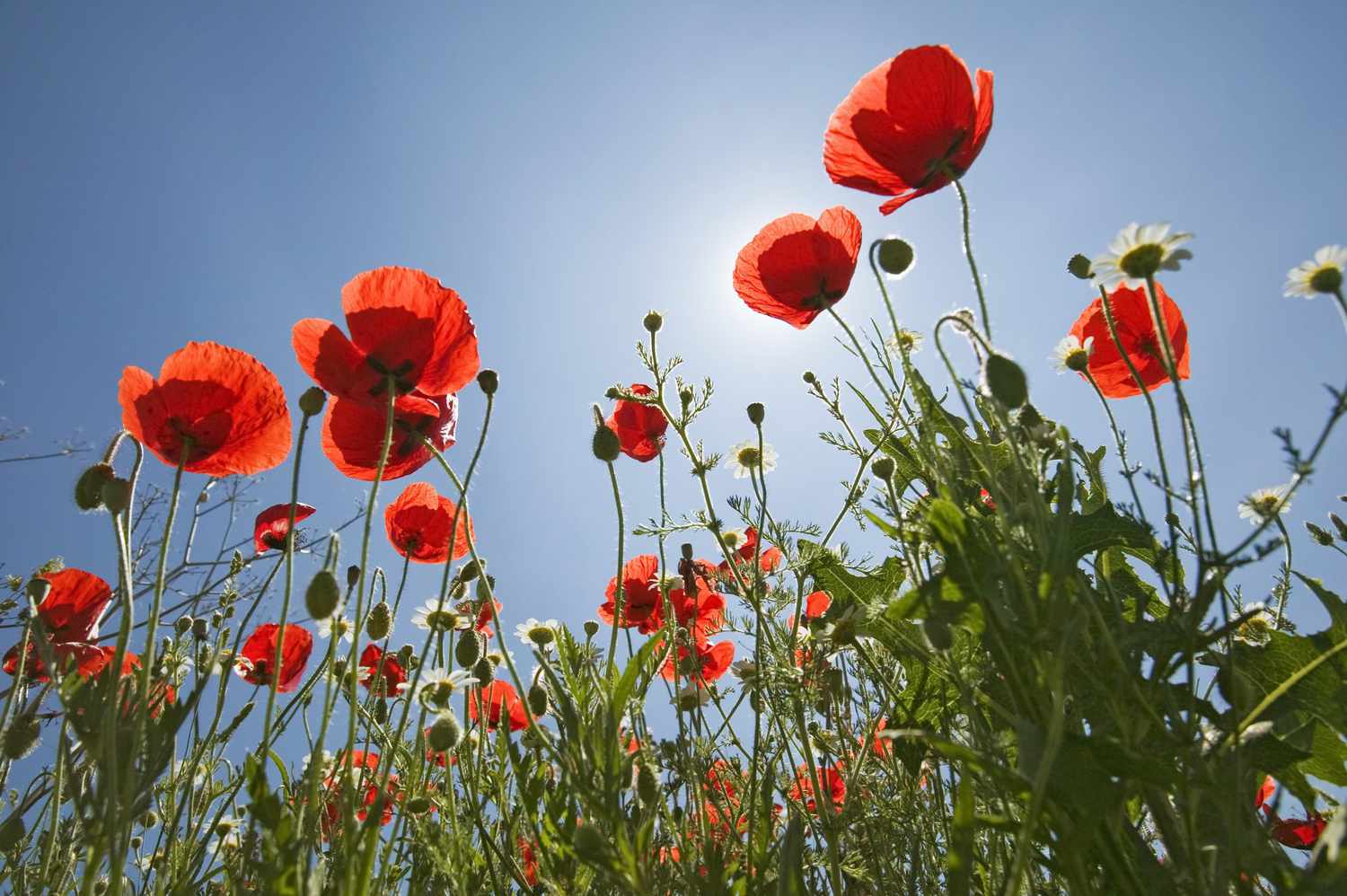
- Botanical Name: Papaver
- Sun Exposure: Full
- Soil Type: Well-draining, Sandy, Clay
- Soil pH: SlightlyAcidic to Neutral (6.5-7.0)
Sow some poppy seeds for happy, rainbow-hued blooms come summertime. Poppies need at least six hours of full sun and plenty of well-drained soil to grow their best. Its self-seeding abilities help wild poppies to thrive in rocky, drought-prevalent areas.
Russian Sage
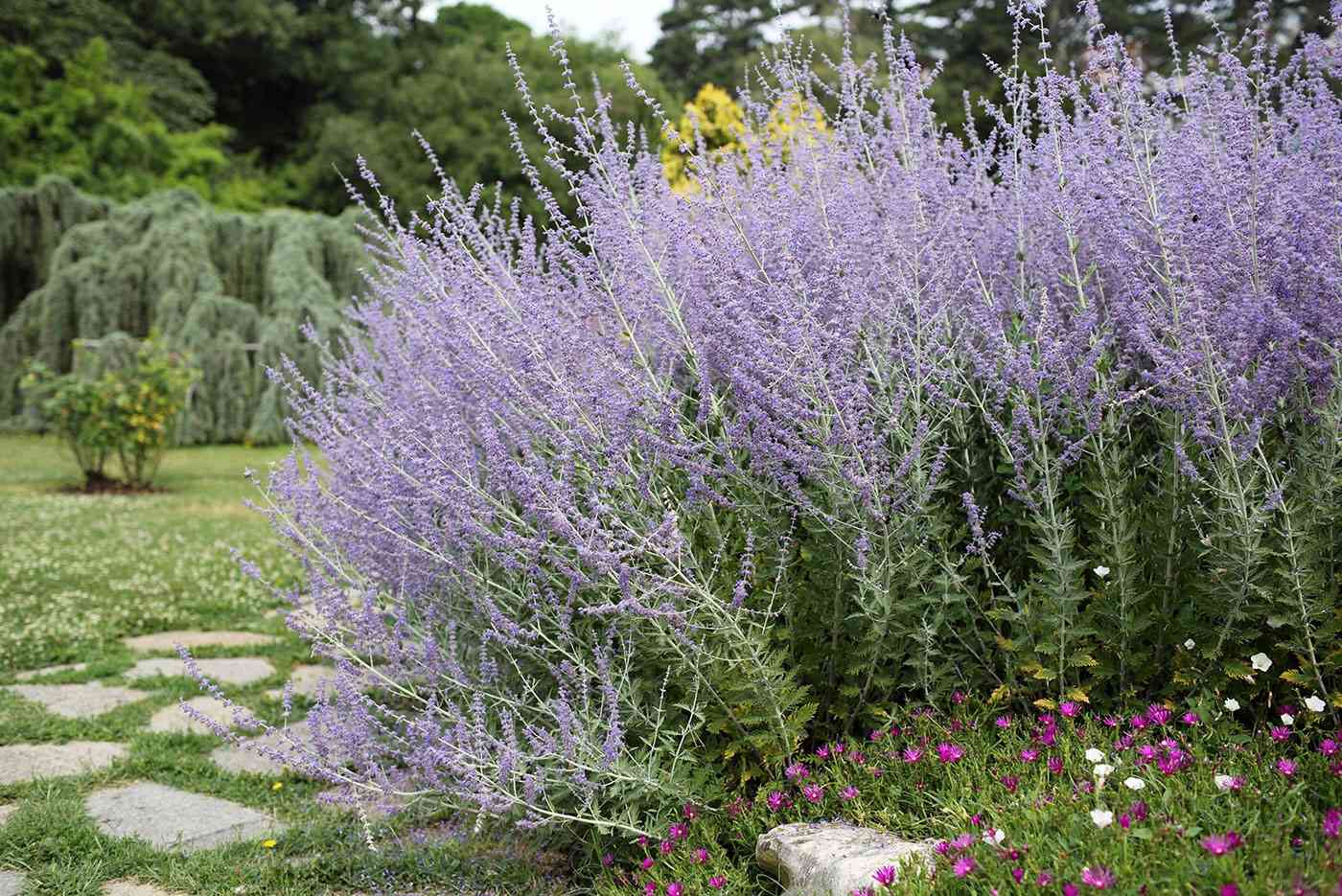
- Botanical Name: Perovskia atriplicifolia
- Sun Exposure: Full
- Soil Type: Well-draining
- Soil pH: Alkaline (7.0-7.8)
Russian sage will spread, making it an excellent plant for extensive garden spaces. Reaching heights of up to five feet, this showy and tubular plant is drought-tolerant and deer-resistant, has bluish-purple blooms in the summer, and remains colorful into the fall. The foliage impresses in the winter as it features silver stems, sometimes appearing a chalky white.
Salvia
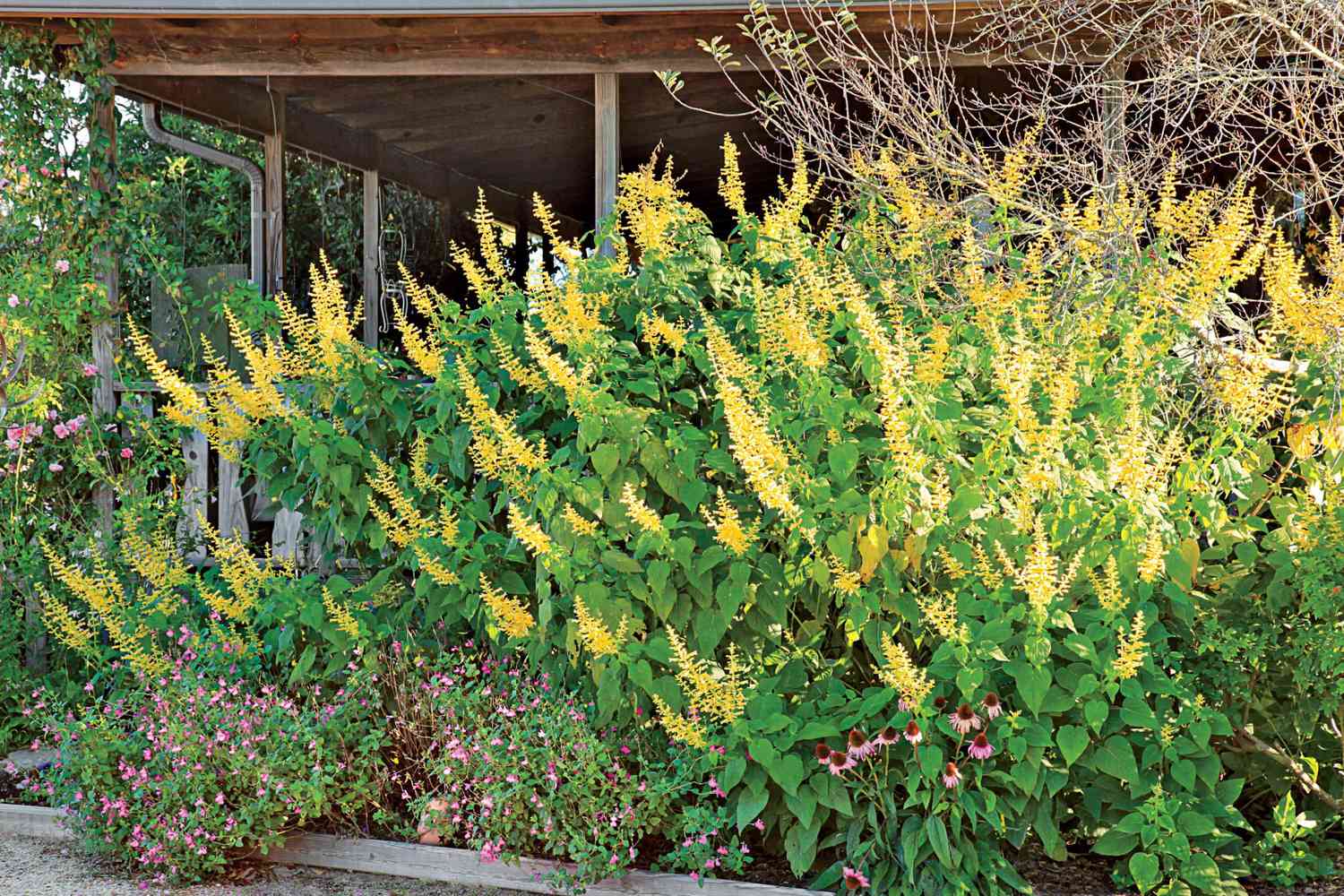
- Botanical Name: Salvia
- Sun Exposure: Full
- Soil Type: Well-draining, Moist, Loamy, Rich
- Soil pH: Acidic toSlightlyAcidic (5.5-6.5)
Hummingbirds and butterflies love these attractive blooms. Cousin to the culinary sage, these plants are grown primarily for show. The blossoms get big, so keep in mind when planting that they need plenty of room to grow.
Snapdragon
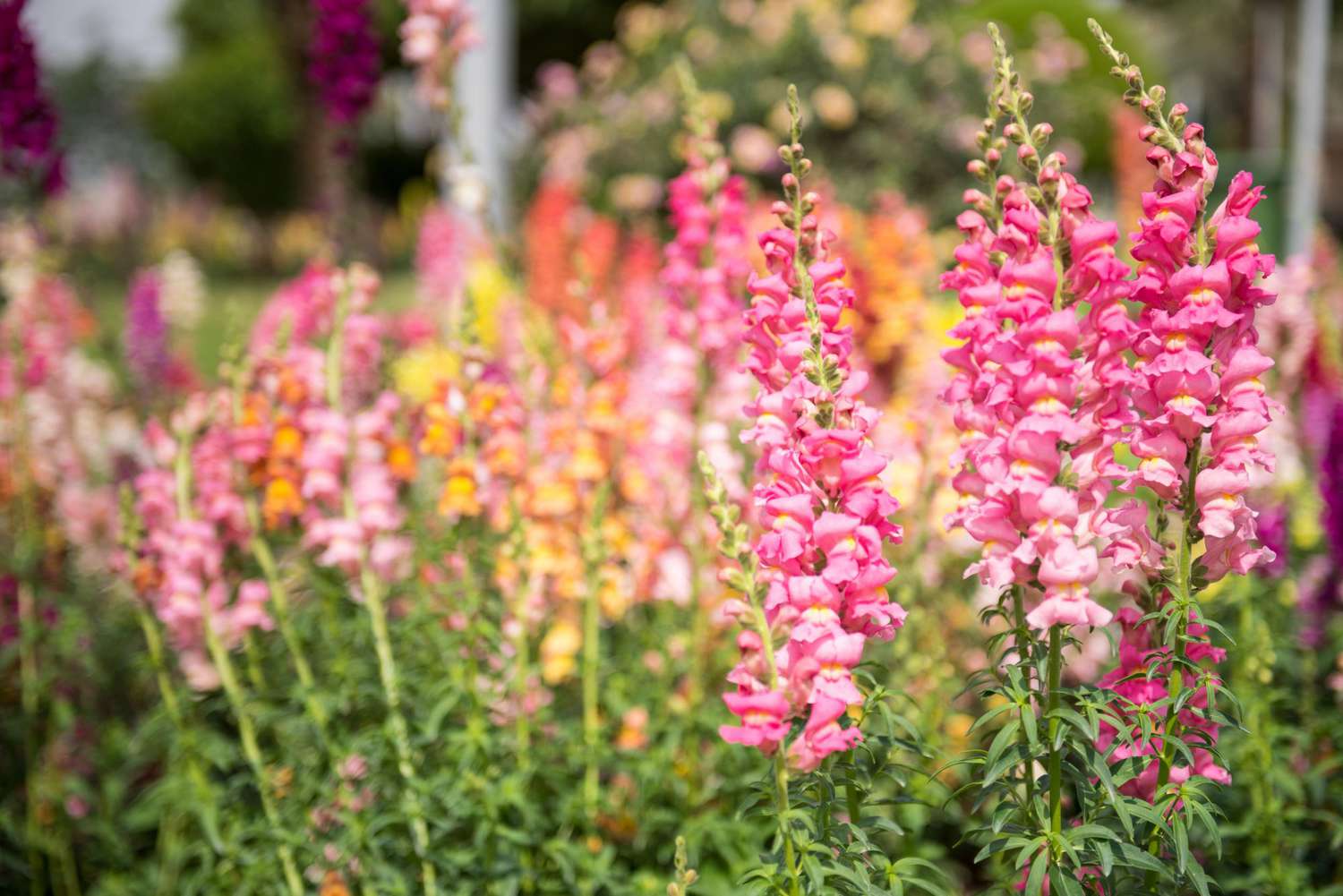
- Botanical Name: Antirrhinum majus
- Sun Exposure: Full
- Soil Type: Well-draining, Moist, Rich
- Soil pH: SlightlyAcidic to Neutral (6.2-7.0)
Snapdragons thrive in full sun, so they’re best for the brightest spots in your garden. Their spiky, many-hued blooms bring instant cheer. These flowers, grown as annuals, make excellent options for containers or to fill space in an outdoor garden.
Sunflower

- Botanical Name: Helianthus annuus
- Sun Exposure: Full
- Soil Type: Well-draining, Moist, Rich
- Soil pH: SlightlyAlkaline (6.0-7.0)
The sunniest flower of all, sunflowers, love full sun. No surprise there. They need at least six hours of direct sun daily to create those big yellow blooms. These sturdy plants are adaptable and bloom in the summer and fall.
Viola

- Botanical Name: Viola spp.
- Sun Exposure: Full
- Soil Type: Well-draining, Moist
- Soil pH: Acidic (4.8-5.8)
Violas grow in various colors, including white, yellow, pink, red, orange, and even black. Newer selections are cold weather tolerant, making them ideal for planting in the fall of the Lower, Middle, Coastal, and Tropical South. Violets also grow well in rock gardens or as a woodland plants.
Zinnia
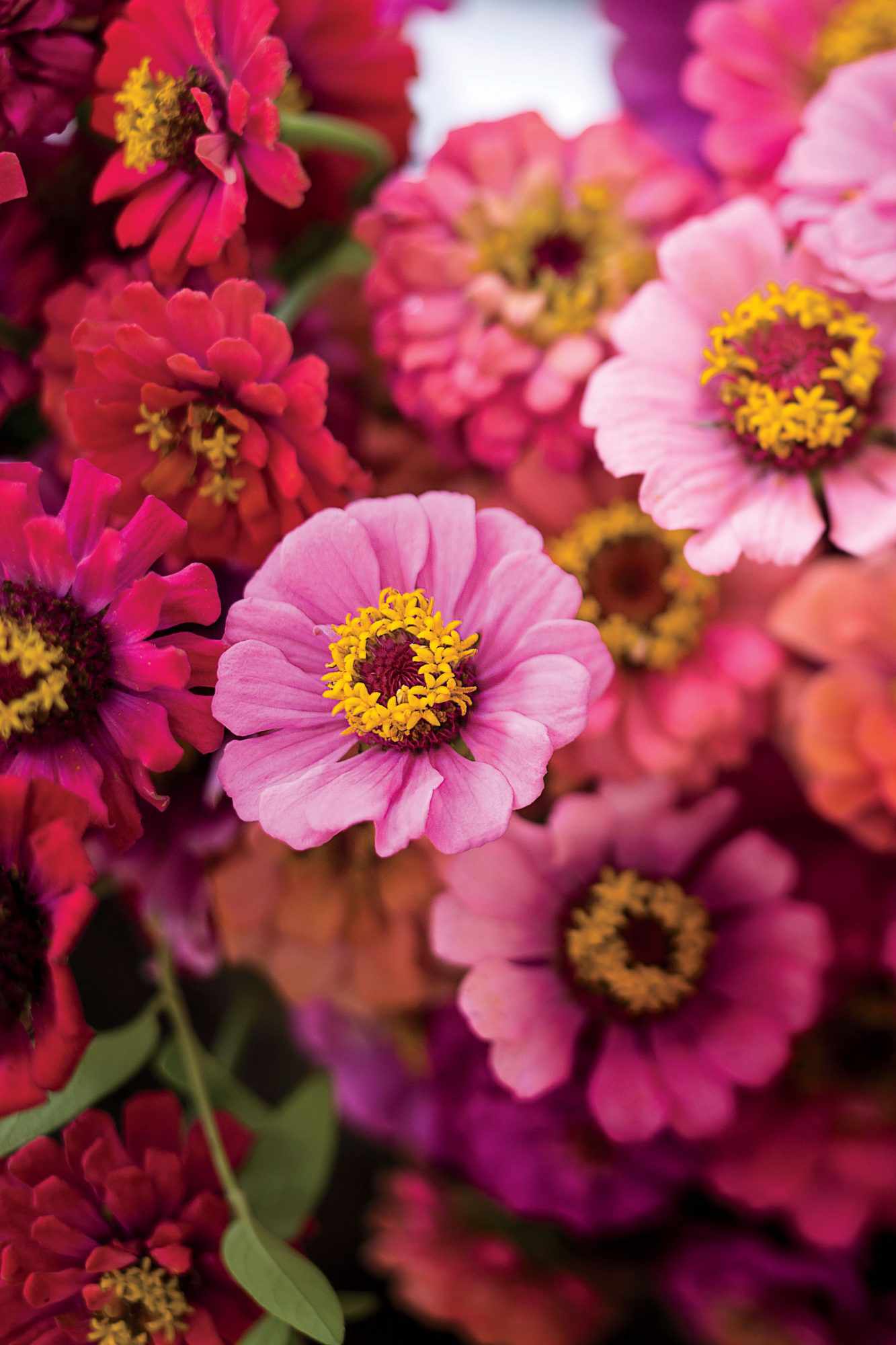
- Botanical Name: Zinnia elegans
- Sun Exposure: Full
- Soil Type: Well-draining
- Soil pH: Neutral to Slightly Alkaline (5.5-7.5)
You can’t ask for a more beautiful addition to your garden than Zinnias. The easiest annuals to start from seeds, these bright buds will bloom in containers until an autumn frost. Snip them just as they are beginning to open for a show-stopping centerpiece.